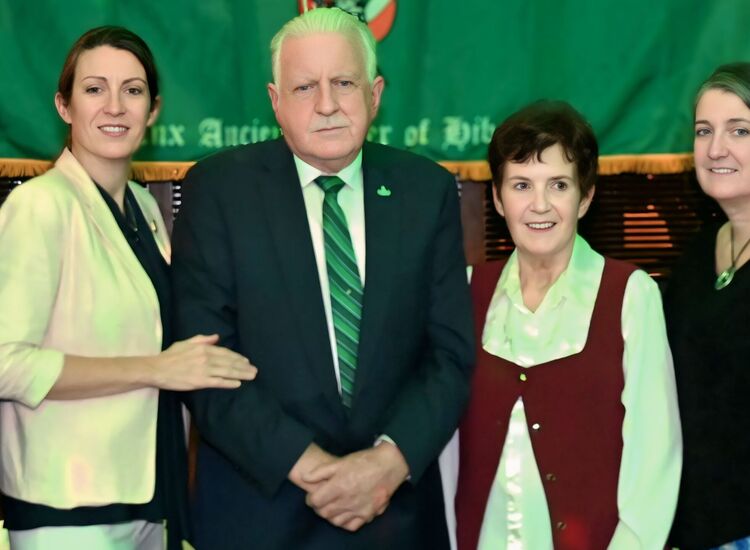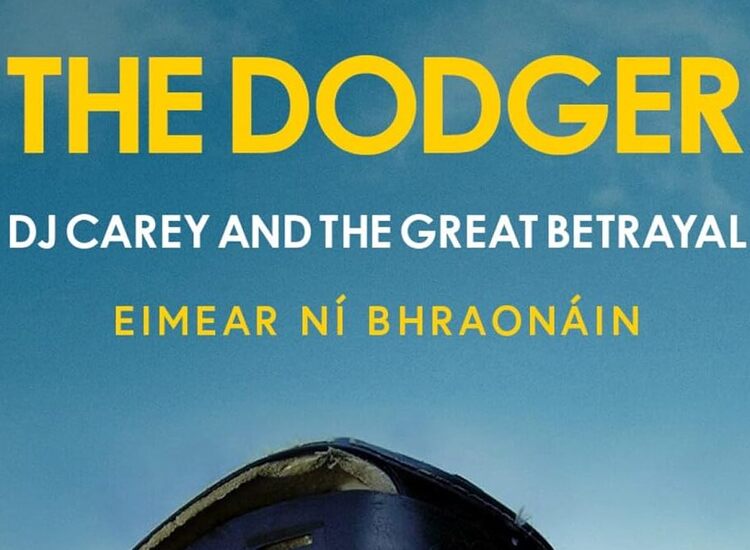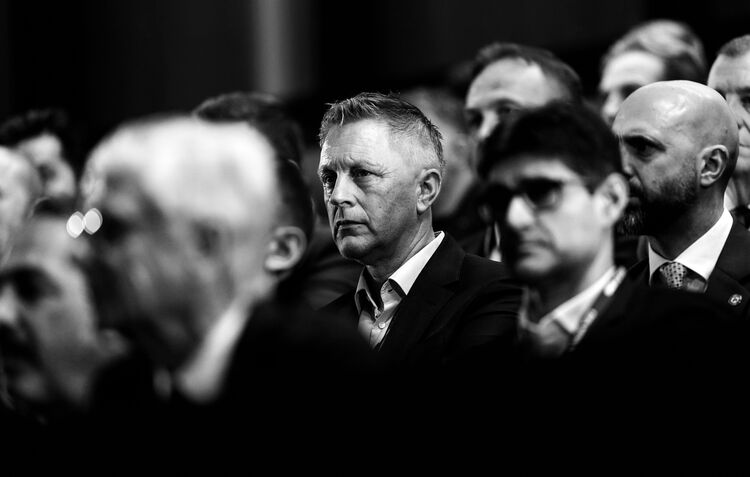Rachael Blackmore, Ireland’s most successful female jockey, announced last week that she is retiring. The 35-year-old from County Tipperary said: ‘‘I feel the time is right. I am sad, but I am also incredibly grateful for what my life has been for the past 16 years. I feel so incredibly lucky to have had the career I have had.’’ The daughter of a dairy farmer and a school teacher, Blackmore rode ponies as a child near her home in Killenaule and initially planned on studying to become a vet. Last week, she paid tribute to the colorful John “Shark” Hanlon, who gave her first winner, and to Henry de Bromhead, who trained many of her big race-winners. She rode her first winner as an amateur in February 2011 at Thurles before turning professional in 2015 and ended her riding career in Mallow on May 10 when riding the 575th winner of her 4,566 race career.
In 2021 Rachael became the first female jockey to win the Aintree Grand National on board Minella Times, who was trained by de Bromhead and owned by J.P McManus. Earlier that year Rachael had become the first female jockey to win the Champion Hurdle at Cheltenham, on board Honeysuckle. Rachael, who will celebrate her 36th birthday in July, has not confirmed what her future plans are, but a few days after retiring she was named as one of the Ambassadors for the Dun Laoghaire Regatta, which gets under way in July.
LOUTH, MONAGHAN
HEAD TO NEWBRIDGE
The race for the Sam Maguire Cup continues this weekend with four games on Saturday. Louth, who won the Leinster final for the first time since 1957, will now play neighbors Monaghan. Last season Louth played some of their home National League games at Grattan Park in Inniskeen, Co. Monaghan, but for this championship clash they are going to use the recently revamped St Conleth’s Park in Newbridge. A strange venue, perhaps, for two counties in the north of Dublin, but our motorway network now makes it relatively easy to get to provincial venues. Donegal, the newly crowned Ulster champions, start their Sam Maguire campaign in Ballybofey against old Ulster rivals Tyrone. And there is another big Ulster derby at the Athletic Grounds where Armagh play Derry. Meanwhile in Navan, Meath, the beaten Leinster finalists, will play Cork who must fancy their chances after a great performance against Kerry in the Munster semi-final.
STEELERS VS VIKINGS
AT CROKER SEPT 28
The NFL announced last week that Dublin will get its first NFL regular season game on Sept. 28 when the Pittsburgh Steelers play Minnesota Vikings in Croke Park. Earlier this year the Irish Government committed to providing close to €10 million in funding for the event, which is expected to be a huge tourism boost for Ireland. Tickets prices will start at €100 and the capacity of Croke Park will be reduced from 82,300 to 67,000 as seats will be installed on Hill 16 and some seats close to the sidelines cannot be sold. The yearly Aer Lingus College Football Classic series has seen a considerable financial benefit in recent years, with Kansas State set to face Iowa State this August in the Aviva Stadium. One month later, Dublin will join the likes of London, Madrid, Berlin and Sao Paulo as NFL host cities.
Dublin’s debut in September will be a moment nearly 30 years in the making, with the Steelers last playing in Ireland as part of a pre-season game against the Chicago Bears in 1997. The team have not played overseas since 2013, when they faced the Minnesota Vikings at Wembley Stadium, losing 34-27. Henry Hodgson General Manager of the NFL UK and Irish office said: ‘‘In terms of population, Ireland is smaller than other markets we could go into, but in terms of passion for NFL fans, we saw and heard that. The next two biggest factors are the Pittsburgh Steelers and the Rooney family who own the franchise and their connection to Ireland and wanting to bring the game back in terms of their heritage.’’
SPECIAL CONGRESS
TO VOTE ON SHORTS
The Camogie Association will hold a Special Congress in Croke Park tomorrow in a bid to resolve the controversy over players being forced to wear skorts rather than shorts. A vote will be held on the introduction of a rule to allow players the option to wear skorts or shorts. If passed, it will come into effect almost immediately. Controversy erupted in recent weeks when camogie players from Dublin and Kilkenny were forced to change into skorts before their Leinster semi-final after turning up in shorts as a protest. The protest came days after a Gaelic Players Association survey highlighted how 70 per cent of players surveyed experienced discomfort while wearing the skort.
While hopeful that the rules around playing gear will change, Offaly player Mairead Teehan says it’s not guaranteed to happen. She said: ‘‘Obviously the
Association are after calling for the Special Congress, which is great, but it’s going to be much the same delegates who will vote again this time.’’
ENDING OF SEVENS
IS ‘DEFLATING’
CEO of Rugby Players Ireland Simon Keogh says that the decision by the IRFU to end the Irish men’s rugby Sevens program will leave players with a “huge challenge” in trying to maintain careers in the game. Last week, the IRFU confirmed the program will be brought to a conclusion at the end of the 2024/25 season, with financial considerations paramount, given the backdrop of an €18 million deficit for the 2023/24 period. However, former Ireland Sevens captain Billy Dardis said, ”It’s unbelievably deflating. It’s devastating.” The challenge now for players on the men’s program will be considerable, particularly with a dwindling number of professional teams to choose from. However the IRFU will continue to field a women’s Seven team.
VILLA, N. IRISH LEGEND
PETER MCPARLAND, 91
Peter McParland, the last survivor of the 22 players who lined out for the 1957 FA Cup Final, died on May 4 at the age of 91. McParland scored both of Aston Villa’s goals in the 2-1 win over recently-crowned league champions Manchester United, whose lone scorer, Tommy Taylor, died in the Munich air disaster on Feb. 6, 1958. Six United players of the 1957 lineup died (of eight in all), and two more could not resume their careers due their injuries.
Villa were winning the cup for a record seventh time, though they haven’t won it since. United would have to wait until the Alex Ferguson era to claim the league-cup double.
McParland’s other great claim to fame was scoring five goals for Northern Ireland in the 1958 World Cup held in Sweden, where they reached the quarterfinals. His international captain Danny Blanchflower once described him the "the finest ever inside forward in British football.”
Legendary goalscorer Jimmy Greaves said McParland was “one of the most dangerous wingers I have ever seen, cutting through defenses at tremendous speed and finishing with cannonball shots”
The future star was born in Newry and raised on Chapel Street, the same street as another Northern Ireland legend, goalkeeper Pat Jennings. His father worked in Birmingham during World Ward II and sent home reports of Aston Villa’s games, fueling his son’s affection for the club.
However, McParland initially went south of the border to take up a railway apprenticeship, and it was while a youngster playing for Dundalk that he was talented-spotted by Villa’s manager George Martin. He joined the club in 1952.
“My ambition was to play for Aston Villa and I achieved it. I loved playing for the club, it was my life,’’ he said of his decade there. He became first player to score in the finals of both knockout competitions, when Villa won the League Cup in 1961.
If McParland was an all-time Aston Villa legend, he was the villain as far as many United fans were concerned. He charged the opposing goalkeeper Ray Wood in the 6th minute, and both went down, but the United man got the worst of it and was stretchered off unconscious. No subs were allowed in those days, and McParland’s Northern Ireland colleague Jackie Blanchflower, brother of Danny, went into goal.
In extended BBC TV highlights posted on Aston Villa’s YouTube channel, commentators Kenneth Wolstenholme and Wally Barnes thought the challenge perfectly fair (under the rules at that time), but a section of the United following booed McParland. His goals in the 68th and 73rd minutes silenced them somewhat; meanwhile Taylor’s 83rd minute effort made for an exciting last few minutes.
Wood, who had a broken cheekbone, came back on but was a virtual passenger out on the leftwing. He resumed goalkeeping duties for the last few minutes. Blanchflower was one of those who never played again after Munich. United’s No. 8 was Billy Whelan, aka Liam, the Dubliner killed at Munich, while Villa’s No. 6 Pat Saward, from Cobh, Co. Cork, was another Republic of Ireland international involved in the final.
Wood, who survived the Feb. 6 tragedy with minor injuries, was transferred to Huddersfield and was succeeded by another Munich survivor Harry Gregg, who also played in the World Cup for Northern Ireland. When United returned to Wembley to play Bolton, losing again, only Bill Foulkes and Bobby Charlton were left of the 1957 XI. The pair, however, were also in the United side that won the European Cup at the same venue in 1968
After his Villa career ended in 1962, McParland played with Wolves, Plymouth Argyle, Worcester City and the Atlanta Chiefs, returning to Northern Ireland and winning the Irish League as player-manager of Glentoran in 1970. He retained his connections to Aston Villa, returning as an honored guest often, and lived later in life in Bournemouth where he worked in his son’s property business.








